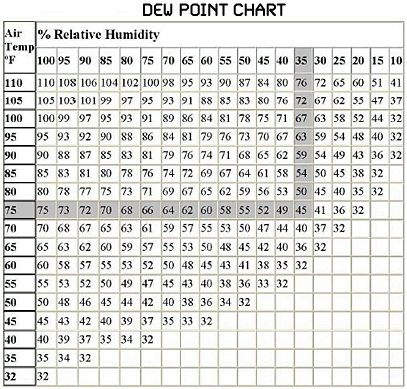Humidity is the amount of water vapor in the air. In daily language
the term "humidity" is normally taken to mean relative humidity. Relative humidity is defined as the ratio of the partial
pressure of water vapor in a parcel of air to the saturated vapor pressure of water vapor at a prescribed temperature. Humidity may also
be expressed as absolute humidity and specific humidity. Relative humidity is an important metric used in forecasting weather. Humidity
indicates the likelihood of precipitation, dew, or fog. High humidity makes people feel hotter outside in the summer because it reduces
the effectiveness of sweating to cool the body by reducing the evaporation of perspiration from the skin.
Relative humidity is defined as the ratio of the partial pressure of water vapor (in a gaseous mixture of air and water vapor) to the
saturated vapor pressure of water at a given temperature. Relative humidity is often mentioned in weather forecasts and reports, as it is
an indicator of the likelihood of precipitation, dew, or fog. In hot summer weather, it also increases the apparent temperature to humans
(and other animals) by hindering the evaporation of perspiration from the skin as the relative humidity rises.
For more in-depth information click
HERE.

